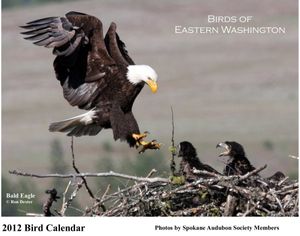Eagle, peregrine fly free of sensitive species protections in Washington
WILDLIFE -- Bald eagles and peregrine falcons have been removed from Washington's state list of “sensitive species" by the Washington Fish and Wildlife Commission.
Both species had been protected under the federal Endangered Species Act starting in the 1970s.
The commission’s action on Friday to reduce the state’s protective status of the two birds of prey reflects the species’ steady recovery since the 1970s, when the pesticide DDT was banned under federal law.
Washington law describes sensitive species as “..vulnerable or declining and is likely to become endangered or threatened in a significant portion of its range within the state without cooperative management or removal of threats”
Although both species are still protected under other federal laws, the state will no longer designate them for special attention in local land-use planning.
“This has been a long time coming,” said Penny Becker, WDFW Wildlife Diversity manager. “Both of these species are success stories in Washington as well as in other states.”
State wildlife managers recommended delisting both birds because they no longer meet the state's definition of "sensitive species," Becker said Becker. Although both species are still protected under federal law, the state will no longer designate them for special attention in local land-use planning.
The commission, meeting in Olympia on Friday and Saturday, also approved the reclassification of three other wildlife species. White pelicans were reduced from “endangered” to “threatened” status, while marbled murrelets and lynx were reclassified as “endangered” due primarily to the continuing loss of essential habitat.
More information is available on all of these species on the department's website.
When the American peregrine was listed as endangered in 1970 under a program that led to the Endangered Species Act of 1974, the eastern population falcon was gone and the populations in the west had declined by as much as 90 percent below historical levels. By 1975, only 324 nesting pairs were known to exist.
The population has significantly recovered, allowing the U.S. Fish and Wildlife Service to remove the species from the federal list of threatened and endangered species in 1999. Some 2,000 to 3,000 breeding pairs of American peregrine falcons are found now in Canada, Mexico, and the United States.
Bald eagles, listed as endangered in 1978, were delisted in 2007 and are flourishing in much of their range.

